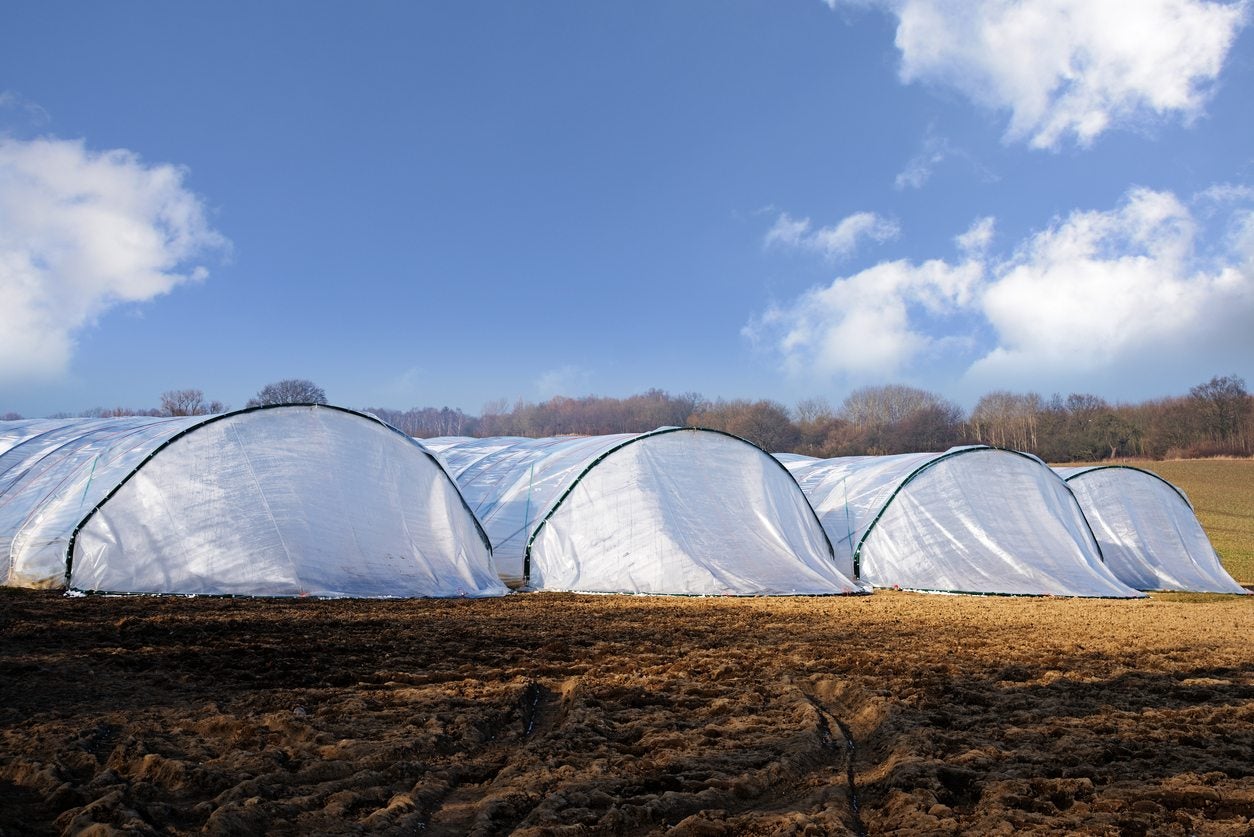
If you’re interested in extending your gardening season but your gardening has outgrown your cold frame, it’s time to consider solar tunnel gardening. Gardening with solar tunnels allows the gardener to have more control over temperature, pest management, harvest quality, and early harvesting. Read on to find out about solar tunnel gardens and using high tunnels to garden.
What is a Solar Tunnel?
What is a solar tunnel? Well, if you look it up on the internet, you’re more likely to find information on skylights than anything to do with gardening. More often, solar tunnel gardens are referred to as high tunnels or low tunnels, depending on their height, or even quick hoops. Basically, a high tunnel is a poor man’s greenhouse made of bent galvanized metal pipe or more often PVC pipe. The pipes form the ribs or the frame over which a layer of UV resistant greenhouse plastic is stretched. The pipes that form this bowed shape fit into larger diameter pipes that are driven 2 to 3 feet (61-91 cm.) into the ground to form a foundation. The entirety is bolted together. The greenhouse plastic or floating row cover can be attached with almost anything from aluminum channels and “wiggle wire” to used drip irrigation tape, whatever gets the job done and is within the budget. Gardening with solar tunnels can be as inexpensive or as pricey as you want it to be. The solar tunnel is not heated as a greenhouse would be and temperature is adjusted by rolling up the plastic or bringing it down.
Benefits of Using High Tunnels
Solar tunnels are usually at least 3 feet (1 m.) in height and often much larger. This gives the added advantage over a cold frame of the ability to grow more produce per square foot (.1 sq. m.) and allows the gardener easy access to the structure. Some solar tunnels are so large that there is ample room to use a garden tiller or even a small tractor. Plants grown using solar tunnel gardening are also less prone to pests, hence a reduction in the necessity for pesticides. Crops can be grown much later in the year with a solar tunnel, which protects them from extreme weather. The tunnel can also protect plants during the hottest times of the year. The shelter can be covered in shade cloth and if you’re really serious, drip irrigation, mini-sprinklers, and one or two fans can be added to keep the crops cool and irrigated. Lastly, even if you purchase a kit to build a solar high tunnel, the cost is generally much less than that of a greenhouse. With so many ideas on how to repurpose material and build your own tunnel, the cost becomes even less. Really look around the property. You may have something lying around that can be repurposed to create a solar tunnel leaving you with a minimal investment for finishing materials.
Sign up for the Gardening Know How newsletter today and receive a free copy of our e-book "How to Grow Delicious Tomatoes".

Amy Grant has been gardening for 30 years and writing for 15. A professional chef and caterer, Amy's area of expertise is culinary gardening.
